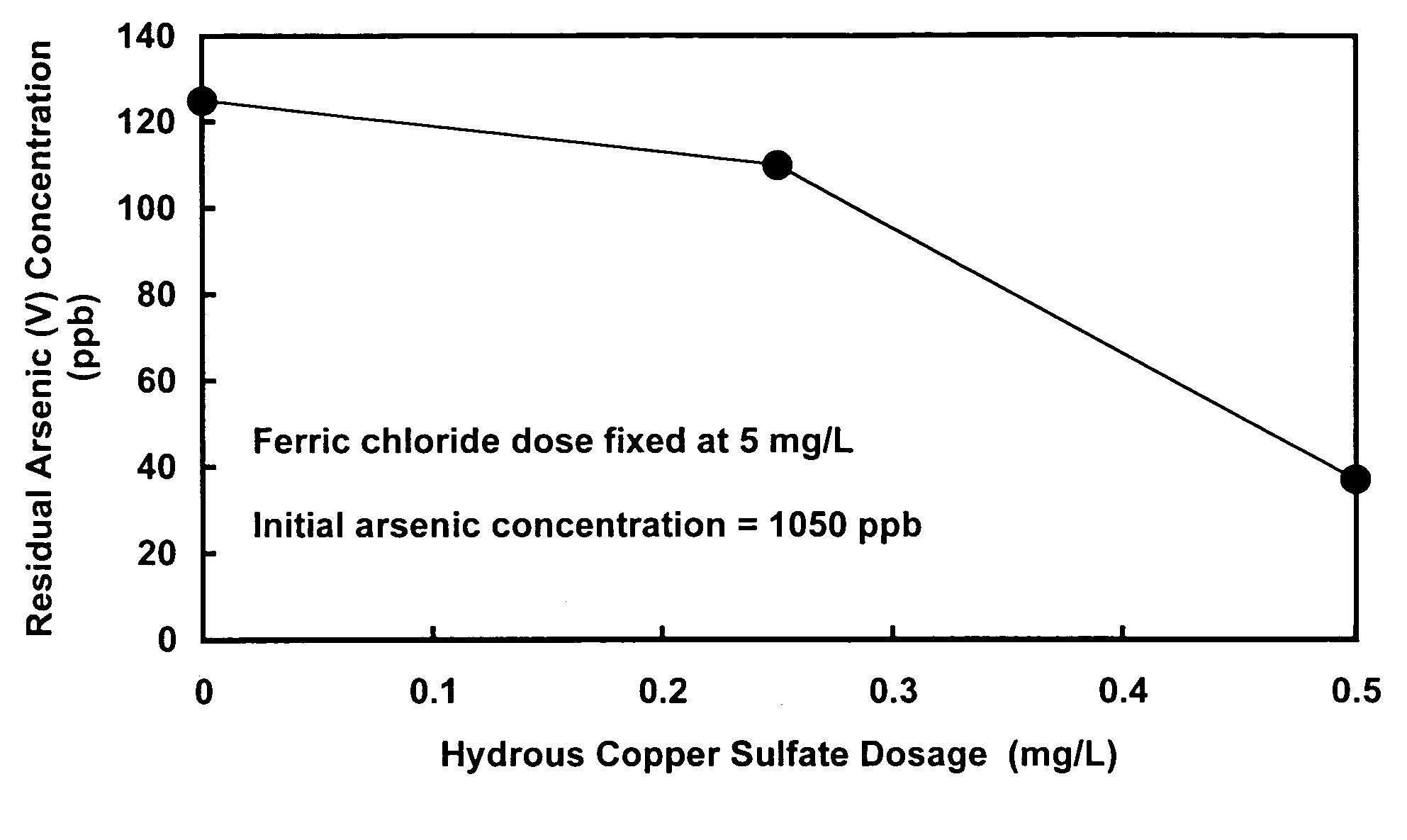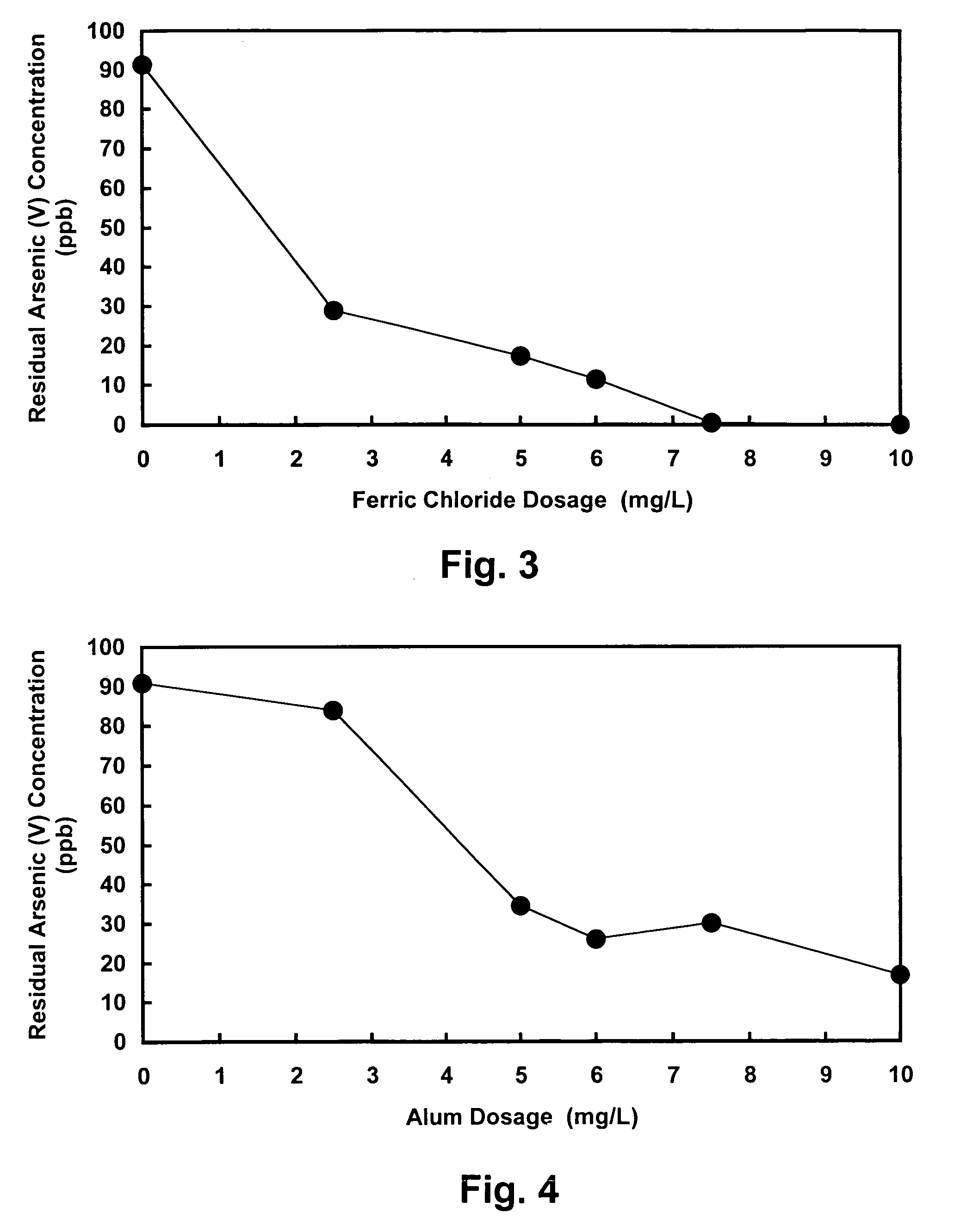Method of removing arsenic and other anionic contaminants from contaminated water using enhanced coagulation
a technology of enhanced coagulation and arsenic, which is applied in the field of decontamination of fluids, can solve the problems of reducing the oxidation rate of arsenic and other anionic contaminants, requiring remediation, and likewise posing risks when present, and achieves the effect of efficient binding of anionic species and enhanced coagulation
- Summary
- Abstract
- Description
- Claims
- Application Information
AI Technical Summary
Problems solved by technology
Method used
Image
Examples
Embodiment Construction
[0025]The present invention relates to an improved water decontamination process comprising contacting water containing anionic contaminants with an enhanced coagulant to form an enhanced floc, which more efficiently binds anionic species (e.g., arsenate, arsenite, chromate, fluoride, selenate, and borate, and combinations thereof) predominantly through the formation of surface complexes. The enhanced coagulant comprises a trivalent metal cation coagulant (e.g., ferric chloride or aluminum sulfate) combined with a divalent metal cation modifier (e.g., copper sulfate or zinc sulfate).
[0026]This invention utilizes the principle disclosed in the co-pending application Ser. No. 09 / 886,175 to Teter et al. that metal (hydr)oxides, at pH below their point of zero charge, attract negatively charged species. This is due to a phenomenon wherein, at pH below the point of zero charge for a given metal (hydr)oxide, surface metal groups tend to be more fully protonated (and thus more likely to ex...
PUM
| Property | Measurement | Unit |
|---|---|---|
| pH | aaaaa | aaaaa |
| pH | aaaaa | aaaaa |
| concentration | aaaaa | aaaaa |
Abstract
Description
Claims
Application Information
 Login to View More
Login to View More - R&D
- Intellectual Property
- Life Sciences
- Materials
- Tech Scout
- Unparalleled Data Quality
- Higher Quality Content
- 60% Fewer Hallucinations
Browse by: Latest US Patents, China's latest patents, Technical Efficacy Thesaurus, Application Domain, Technology Topic, Popular Technical Reports.
© 2025 PatSnap. All rights reserved.Legal|Privacy policy|Modern Slavery Act Transparency Statement|Sitemap|About US| Contact US: help@patsnap.com



